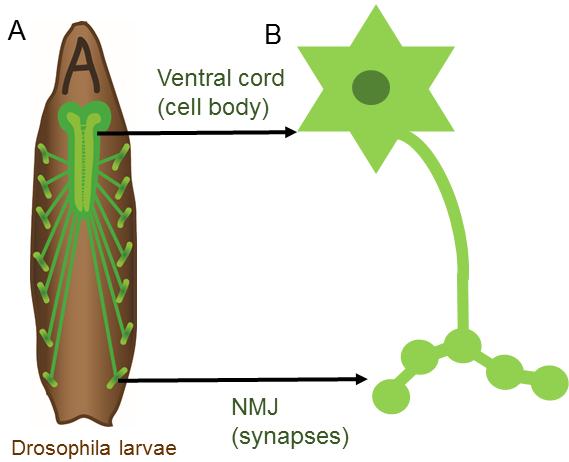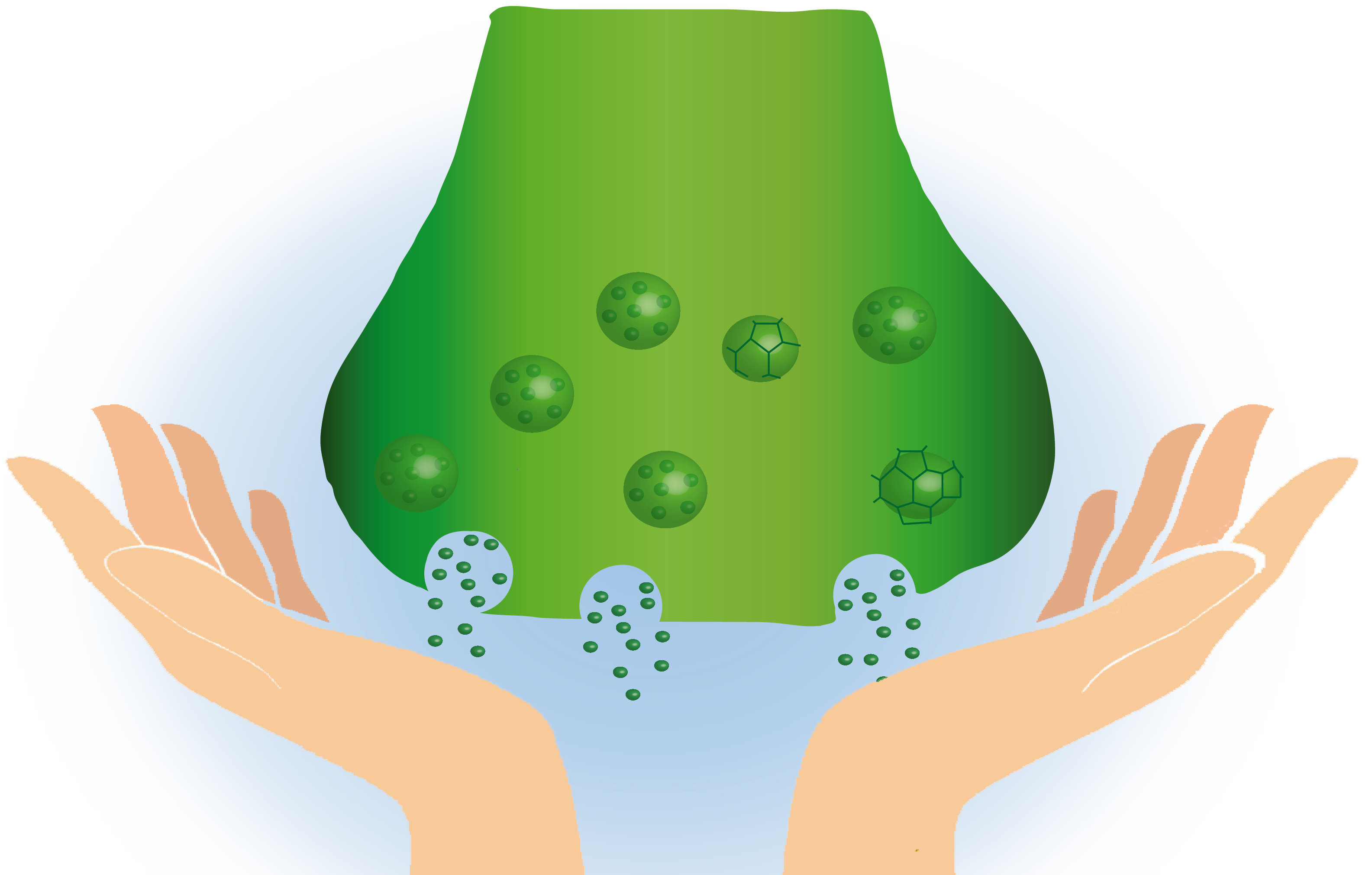What are the synapses?
Synapses are the communication center of the neurons. The syapses have separated pre- and postsynaptic components and the information can flow using electrical or chemical signals.
In the electrical synapses the pre- and postsynaptic components are "in close contact" to form an electrical conductible junction while chemical synapses are physically separated forming the synaptic cleft.

In order to study local homeostasis mechanisms with a role in neurodegeneration we take advantage of the NMJ Drosophila larvae synapses. These are chemical synapses with two ideal characteristics for our research:
1- The synapses can be located far away from the soma. We hypothesize that the distance and the limitation of the axonal transport would exacerbate the importance of the local synapse mechanisms like protein quality control.
2- The synapses of the NMJ are relatively big, allowing us to better perform live imaging to study synaptic mechanisms like autophagy formation or endosome recycling.
Neuronal communication is a sine qua non for proper brain function. Thus, synaptic alteration, malfunction and/or decay is a common hallmark of neurodegenerative diseases and behaviour disorders. We can classify all these brain disoders that share pathogenic synaptic defects under the category of synaptopathies.
